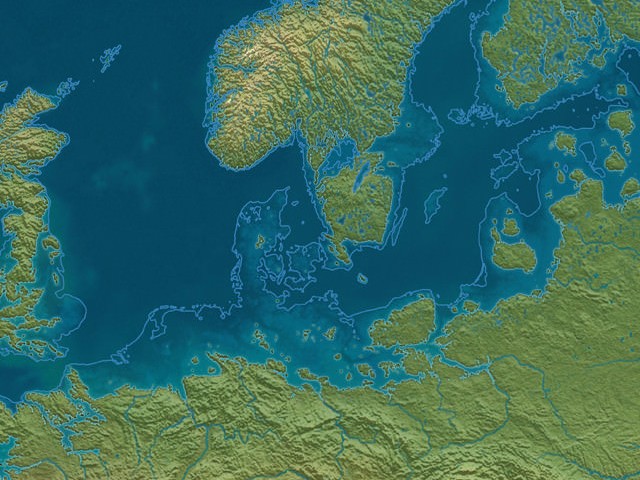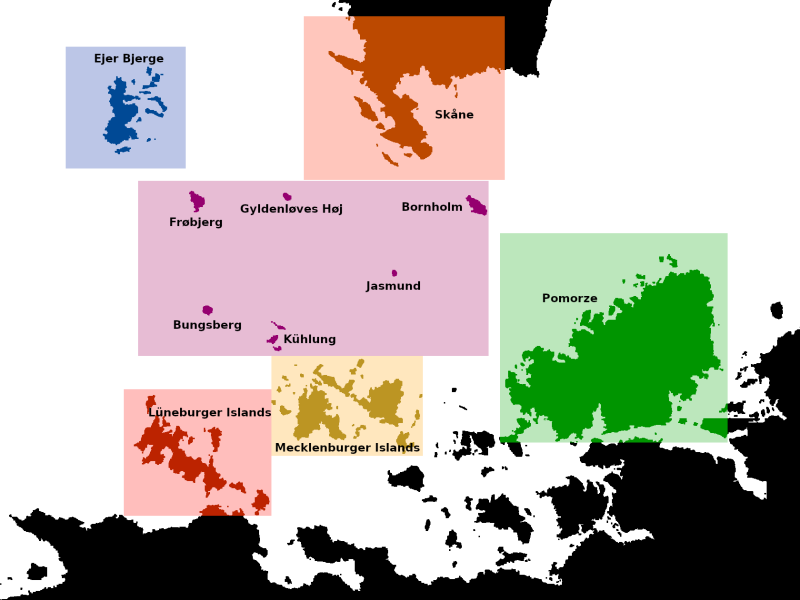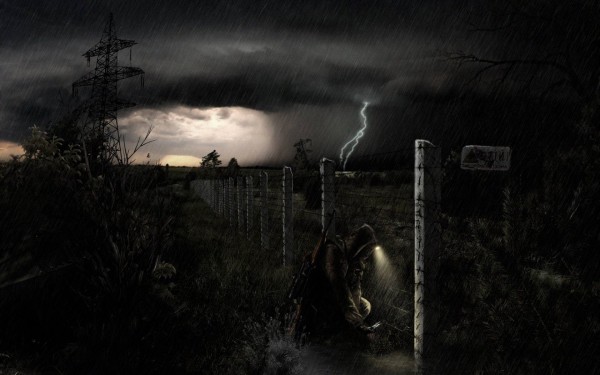 In the early 90s, a large asteroid crashed into the ice of Antarctica, releasing an enormous cloud of steam and dust high into the atmosphere where it stayed for weeks. Once the dust from the impact started to clear, researchers went to study the huge crater, they discovered an unknown orange-brown lichen growing on the newly exposed barren rock. Within a few days the scientists developed a severe lung infection that killed all of them soon after. Whether the spores had been frozen under the ice for millions of years or had arrived on the asteroid, the explosion from the impact had thrown them up into the atmosphere and to be spread by the wind all over the world over the following months. Nearly all people and animals everywhere became infected by the spores, usually ending fatal, reducing the global population to only a small fraction of what it had been within a year.
In the early 90s, a large asteroid crashed into the ice of Antarctica, releasing an enormous cloud of steam and dust high into the atmosphere where it stayed for weeks. Once the dust from the impact started to clear, researchers went to study the huge crater, they discovered an unknown orange-brown lichen growing on the newly exposed barren rock. Within a few days the scientists developed a severe lung infection that killed all of them soon after. Whether the spores had been frozen under the ice for millions of years or had arrived on the asteroid, the explosion from the impact had thrown them up into the atmosphere and to be spread by the wind all over the world over the following months. Nearly all people and animals everywhere became infected by the spores, usually ending fatal, reducing the global population to only a small fraction of what it had been within a year.
Those people and animals who turned out to have some resistance to the spores did survive the infection, but many of them continue to have them growing throughout their bodies like cancer cells, creating a wide range of strange mutations. And even for them, inhaling clouds of spores can overcome their bodies’ defenses, leading to a severe cough that can last for weeks and often be fatal.
At the same time as billions were dying all over the world, the lichens in the crater in Antarctica continued to spread, seemingly warming up the ground as they dissolved the rocks on which they were growing for energy, rapidly melting the surrounding ice much faster than anything that had ever been thought possible. Massive rivers of meltwater flowed into the oceans, raising sea levels, sometimes by several centimeters a day. The rising waters forced the people who survived the spore infection to flee inland as most major cities and industrial regions of the world were swallowed by the waters.
 Four decades later, the rising of the waters finally came to an end, some 80 meters above what it used to be, which some have calculated to mean that all the ice in Antarctica must be completely gone. In Northern Europe, most of the regions around the North Sea and Baltic Sea sank beneath the waves. All that remains of Denmark and of Northern Germany are a few groups of small islands, and a small number of larger islands are where Northern Poland and the Baltic States used to be.
Four decades later, the rising of the waters finally came to an end, some 80 meters above what it used to be, which some have calculated to mean that all the ice in Antarctica must be completely gone. In Northern Europe, most of the regions around the North Sea and Baltic Sea sank beneath the waves. All that remains of Denmark and of Northern Germany are a few groups of small islands, and a small number of larger islands are where Northern Poland and the Baltic States used to be.
 Without any ice to reflect sunlight and a larger ocean surfaces for water to evaporate, the new world is one of frequent and often massive storms. Clear skies are rare in a region that always used to be cloudy and wet, but these days smaller storms happen nearly every week. Towards the start of winter, they become almost daily and often grow to devastating strength that can snap or rip out trees. But people have discovered that salt is quite effective at killing the spores and the swampy marshes along the new coast lines are nearly free of lichen growth. This makes these areas much more hospitable than places further inland, where clouds of spores quickly overwhelm the lungs even of people resistant to them.
Without any ice to reflect sunlight and a larger ocean surfaces for water to evaporate, the new world is one of frequent and often massive storms. Clear skies are rare in a region that always used to be cloudy and wet, but these days smaller storms happen nearly every week. Towards the start of winter, they become almost daily and often grow to devastating strength that can snap or rip out trees. But people have discovered that salt is quite effective at killing the spores and the swampy marshes along the new coast lines are nearly free of lichen growth. This makes these areas much more hospitable than places further inland, where clouds of spores quickly overwhelm the lungs even of people resistant to them.
While the new coastal islands of Northern Europe are home to many tens of thousands of people and large numbers of animals, the sea itself is a different story. When the many large coastal ports of the region sank beneath the waves, the waters also swept away all the landfills and industrial waste and carried the toxic slush into the sea. With the waters from all the large rivers running into the Baltic Sea, the current has slowly carried much of it out into the North Sea and eventually Atlantic Ocean over the decades, but people still avoid swimming in the sea or eat any of the fish that are slowly coming back.

I had the idea for this Wet Wasteland a few years ago when I was reading Apocalypse World. It seems like post-apocalyptic wastes are 70% deserts and 30% nuclear winter, and while those can be really cool, it really gets a bit repetitive eventually. And nuclear war is so 80s. We now have many more varied ways to lay the world to waste and kill of most of the population. Being from Northern Europe, sea level rise and worsening storms are of course the obvious choice.
I am thinking of this world as a kind of blend between Fallout 1 and Metro Exodus with a good dose of Stalker. And having recently watched several videos on a couple military games from the late 80s and 90s like Wasteland and Jagged Alliance, I somehow got the idea that using that period as the peak of technology to be salvaged could be really fun. By now it’s very retro, but a period that hasn’t really been used much for that purpose yet.
I don’t think a setting like this would be much fun for long ongoing campaigns. But for single long adventures or shorter campaigns of 10 to 20 games in something like Mutant: Year Zero, this could be a pretty cool background

Have you noticed, postapo also always seems to happen in rather monocultural places? By which I mean, whether it’s Australia or Nevada, any warring tribes or whatnot always form after the end. The raiders are out to get you for profit or for fun, but like never because their grandpa taught them to hate Ruritanians.
Also, I can think of a small handful of watery postapo, but they always seems kinda… Caribbean.